Isfahan is a captivating city in the heart of Iran, boasting a rich culture and history. With its strategic location at the crossroads of major routes spanning Iran’s north-south and east-west axes, Isfahan has been a thriving center from as far back as the 9th century to the height of its glory during the Safavid dynasty.
As the capital of Persia under Shah Abbas the Great, Isfahan witnessed an architectural renaissance, leaving behind a legacy of awe-inspiring Persian-Islamic structures, majestic boulevards, enchanting covered bridges, opulent palaces, adorned mosques, and towering minarets.
Its historical significance is echoed in the adage “Esfahan nesf-e-jahan ast” (Isfahan is half of the world). The city’s name, Isfahan, traces its roots to Middle Persian Spahan, reflecting its ancient association with military gatherings, as evidenced by its earlier names like Aspadana.
Immerse yourself in the charm of Isfahan as we begin our adventure to explore its timeless wonders and cultural treasures.
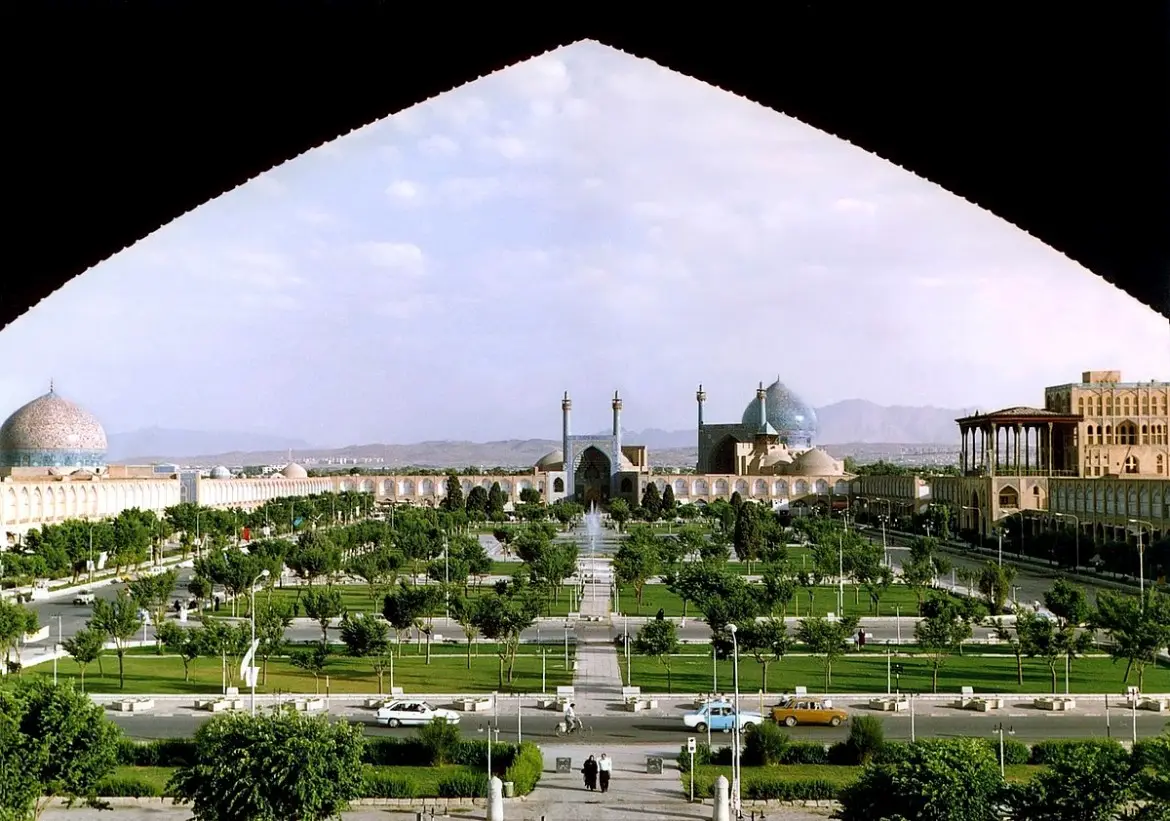
Ready to immerse yourself in Iran’s rich culture and history? Join us on a captivating Isfahan tour and unlock the secrets of this vibrant city! Explore ancient sites, try delicious cuisine, and experience the warmth of Persian hospitality. Book your Iran tour package now and plan an unforgettable journey!
Naghsh-e-Jahan Square
When you visit Naghsh-e-Jahan Square in Isfahan, you step into a world steeped in history and grandeur. Constructed between 1598 and 1629, this UNESCO World Heritage Site spans 160 meters in width and 560 meters in length, surrounded by iconic Safavid-era buildings like the Shah Mosque, Ali Qapu Palace, and Sheikh Lotfollah Mosque.
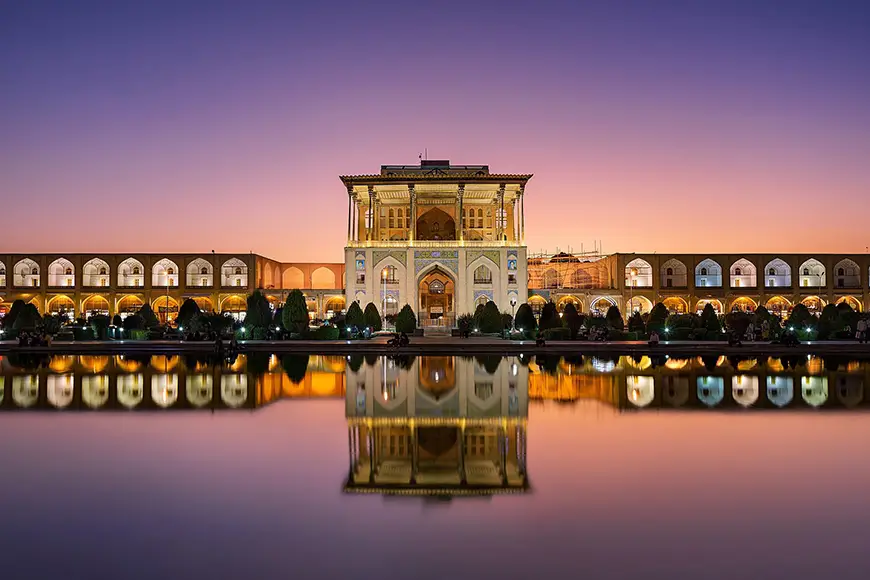
It’s not just a square; it’s a vibrant hub where you can experience the rich cultural life of Persia during the Safavid era, from Friday prayers in the Shah Mosque to festive gatherings, polo matches, and military parades. Surrounding the square, you’ll find a myriad of shops offering the prettiest souvenirs of Isfahan, from intricate Mina and Khatam to mesmerizing Mes and Ghalamkarie. And don’t miss the chance to take a leisurely ride in a horse carriage, making Naghsh-e-Jahan Square the perfect first stop on your Isfahan itinerary.
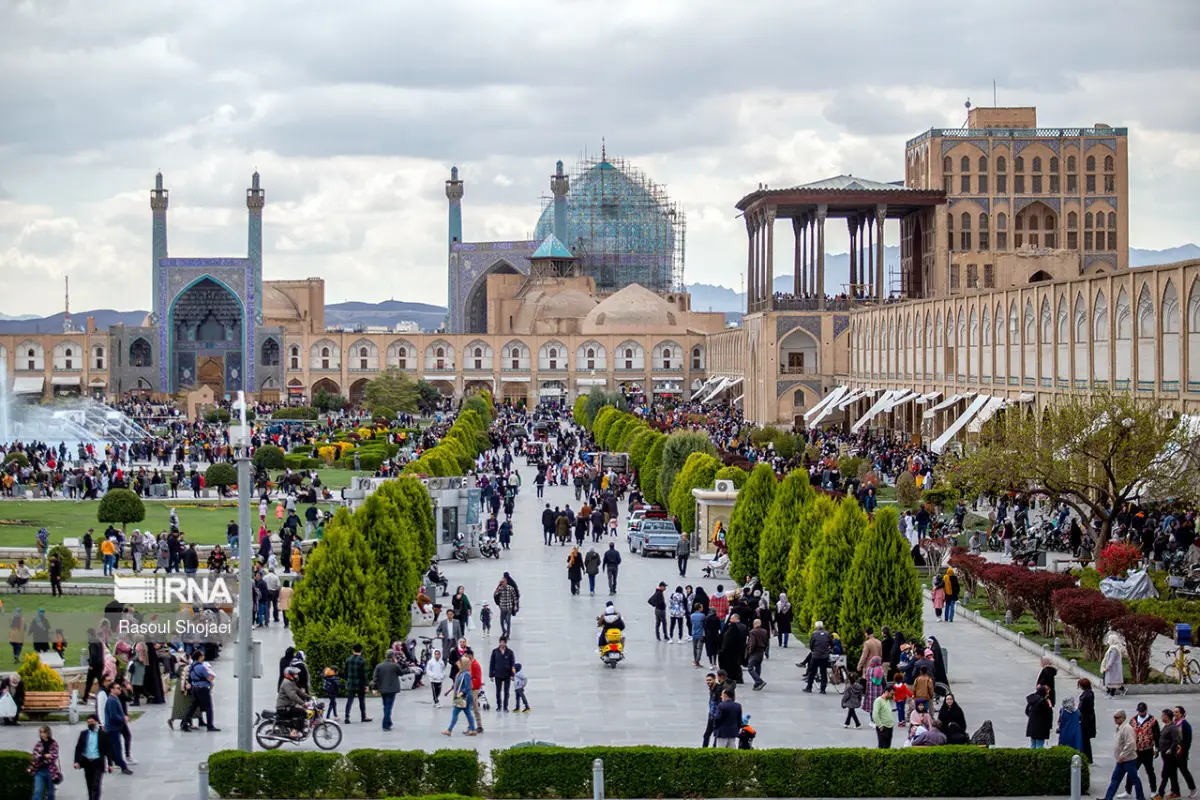
Chehel Sotoun Palace
Chehel Sotoun Palace, also known as “Forty Columns,” awaits you at the far end of a picturesque park in Isfahan. Built by Shah Abbas II as a venue for entertainment and receptions, this Persian pavilion is adorned with exquisite frescoes and ceramic panels depicting key moments in Persian history.
You can explore its magnificent halls, including the hall of mirrors, and marvel at the intricate decorations that add to its splendor. Surrounded by lush gardens and featuring stone lions at its corners, Chehel Sotoun Palace offers a serene retreat where you can immerse yourself in the beauty of Persian gardens and the rich cultural heritage of Iran.
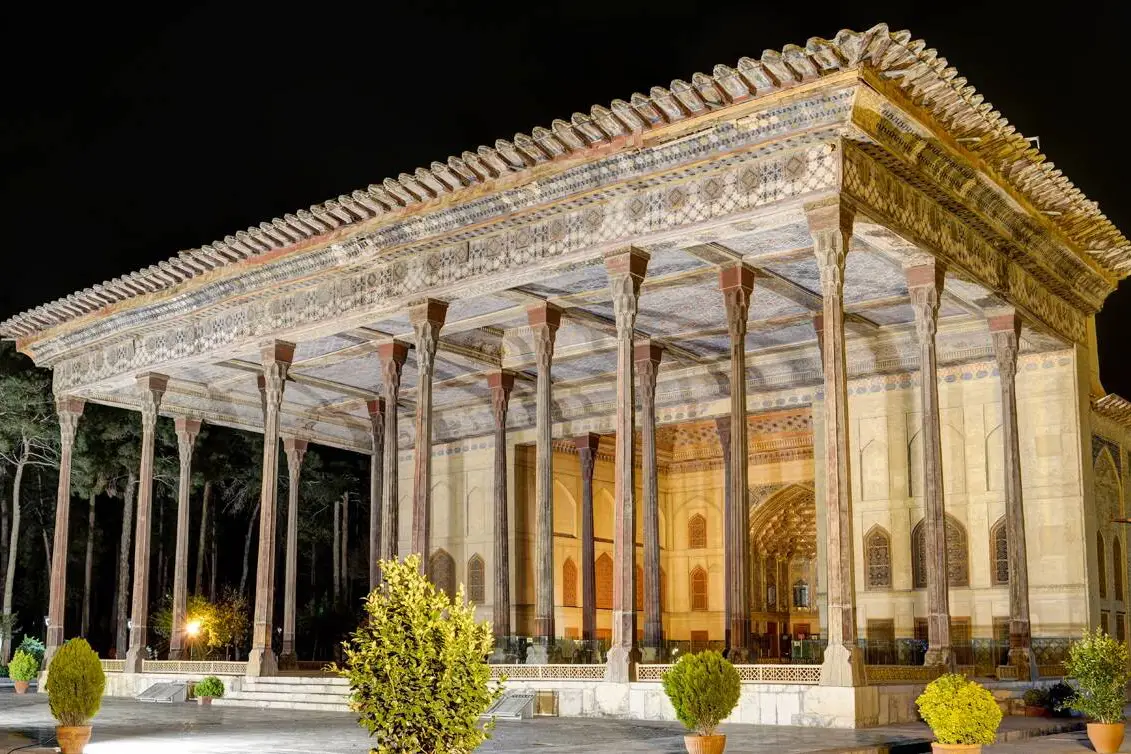
Ali Qapu Palace
Ali Qapu Palace is a majestic symbol of Safavid architecture and Iran’s Islamic heritage in Isfahan. Located on the western side of Naghsh-e Jahan Square, this imperial palace was originally designed as a grand entrance to the Safavid palaces. As you ascend its six floors, each adorned with magnificent decorations, you’ll step into the grandeur of the Music Hall on the top floor, where echoes of past royal receptions and banquets still linger.
The richly ornamented walls, adorned with naturalistic paintings by Reza Abbasi, showcasing floral, animal, and bird motifs that transport you to another era, will leave you in awe. From the upper galleries, you can watch polo matches and festivities unfold in the bustling square below, offering you a unique perspective on Isfahan’s vibrant cultural life.
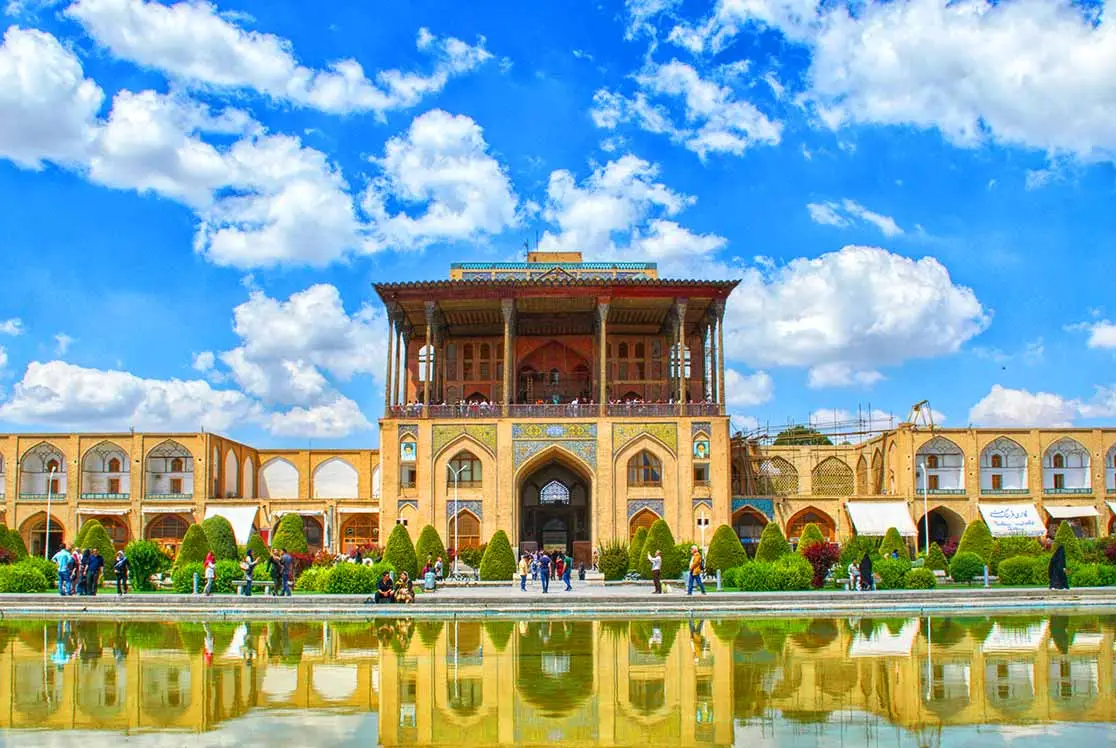
Sheikh Lotfollah Mosque
Sheikh Lotfollah Mosque, a masterpiece of Iranian architecture, graces Isfahan’s eastern side of Naqsh-e-Jahan Square. Constructed between 1603 and 1619, it was designed by Mohammadreza Isfahani under Shah Abbas I’s reign. Unlike the public Shah Mosque, this private royal court mosque lacks minarets and is smaller in size. Its interior reveals a winding passage from the Ali Qapu Palace, protecting royal women.
Though once exclusive, it now welcomes visitors, offering glimpses into its history and architectural marvels. Sheikh Lotfollah Mosque’s asymmetrical layout and vibrant mosaics, including a remarkable peacock motif, immerse you in Safavid grandeur. The mosque’s dedication to Sheikh Lotfollah, a respected scholar, enriches its cultural significance, making it a captivating stop on your Isfahan journey.
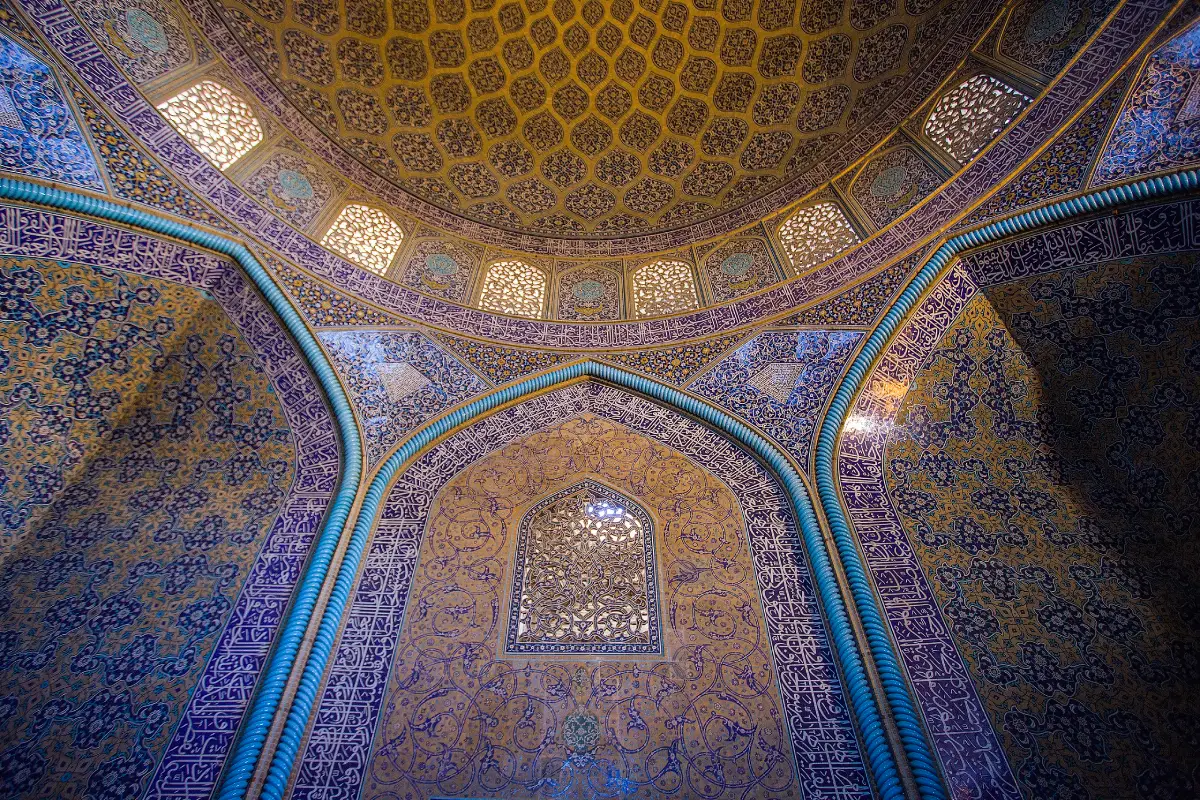
Vank Cathedral
Vank Cathedral, also known as the Holy Savior Cathedral, is located in the New Julfa district of Isfahan, Iran. This district is specifically known for its Armenian heritage and culture, making Vank Cathedral a significant landmark within this community. Established in 1606 by Armenian refugees resettled by Shah Abbas I, the cathedral’s architecture reflects a blend of styles influenced by its diverse history.
Its interior boasts exquisite frescoes and gilded carvings depicting biblical stories and Armenian history. The cathedral stands as a testament to the resilience and creativity of the Armenian community in Isfahan, inviting visitors to marvel at its beauty and rich cultural heritage.
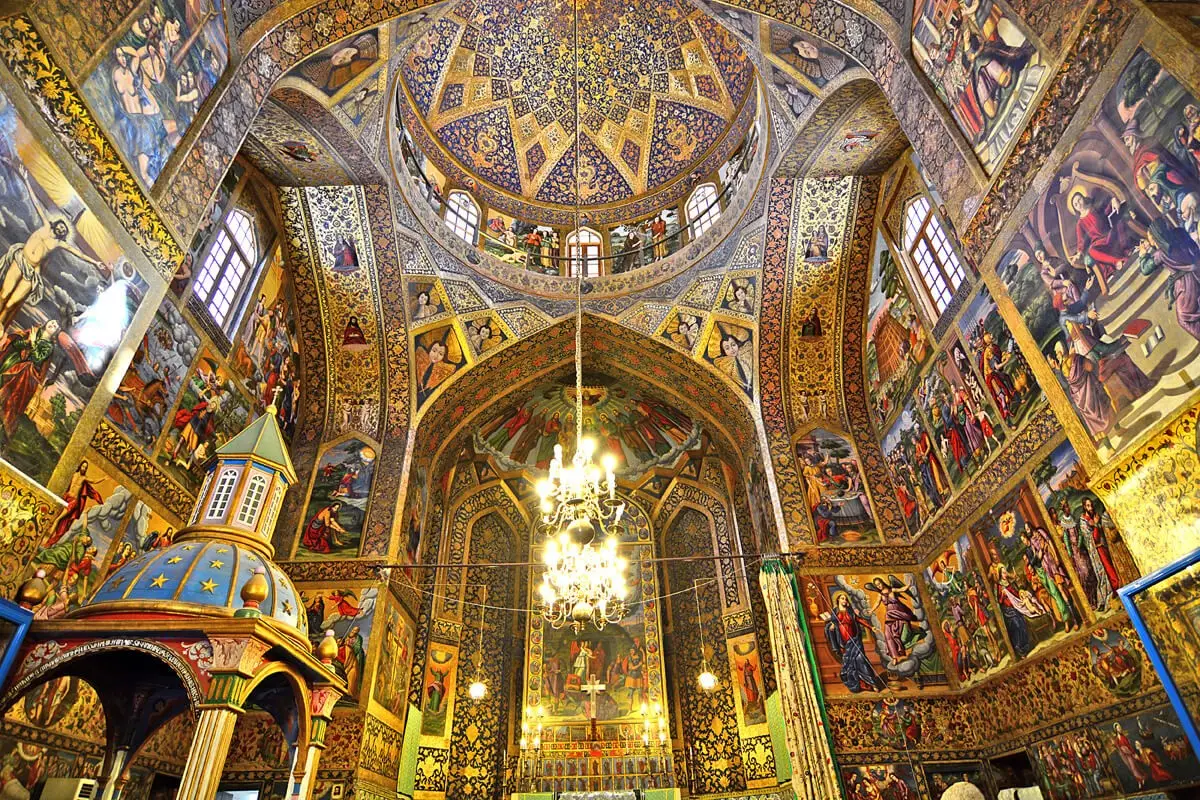
Zayanderud
Zayanderud, Iran’s central plateau’s lifeline, meanders through Isfahan, offering both practicality and beauty. Originating from Zardkuh in Chaharmahal and Bakhtiari Province, its journey spans 420 kilometers, nourishing lush greenery along its banks. The river’s scenic charm, especially near Zaman Khan Bridge, provides a tranquil retreat amidst urban life.
Zayanderud’s significance extends beyond sustenance, fostering recreational spaces and a pleasant atmosphere for locals and visitors alike. Its presence enriches Isfahan’s landscape, inviting you to immerse yourself in nature’s embrace.
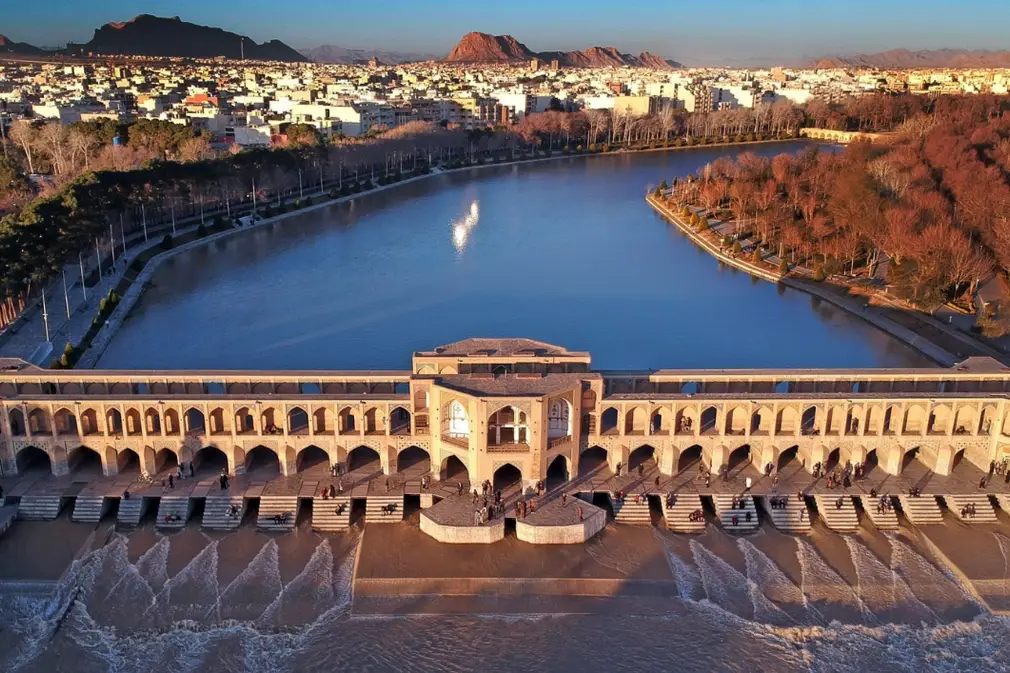
Khaju Bridge
Spanning the Zayanderud River, the Khaju Bridge stands as a symbol of Isfahan’s architectural prowess. Built in the 17th century under Shah Abbas II’s reign, it serves both as a bridge and a place for public gatherings. Adorned with intricate tilework and paintings, it exudes elegance and grandeur.
The bridge’s pavilion, where Shah Abbas II once sat, offers a glimpse into its royal history. As you stroll across its arches, you’ll be captivated by its beauty, especially when illuminated at night. The Khaju Bridge remains a beloved landmark, embodying the harmony between utility and aesthetic excellence.
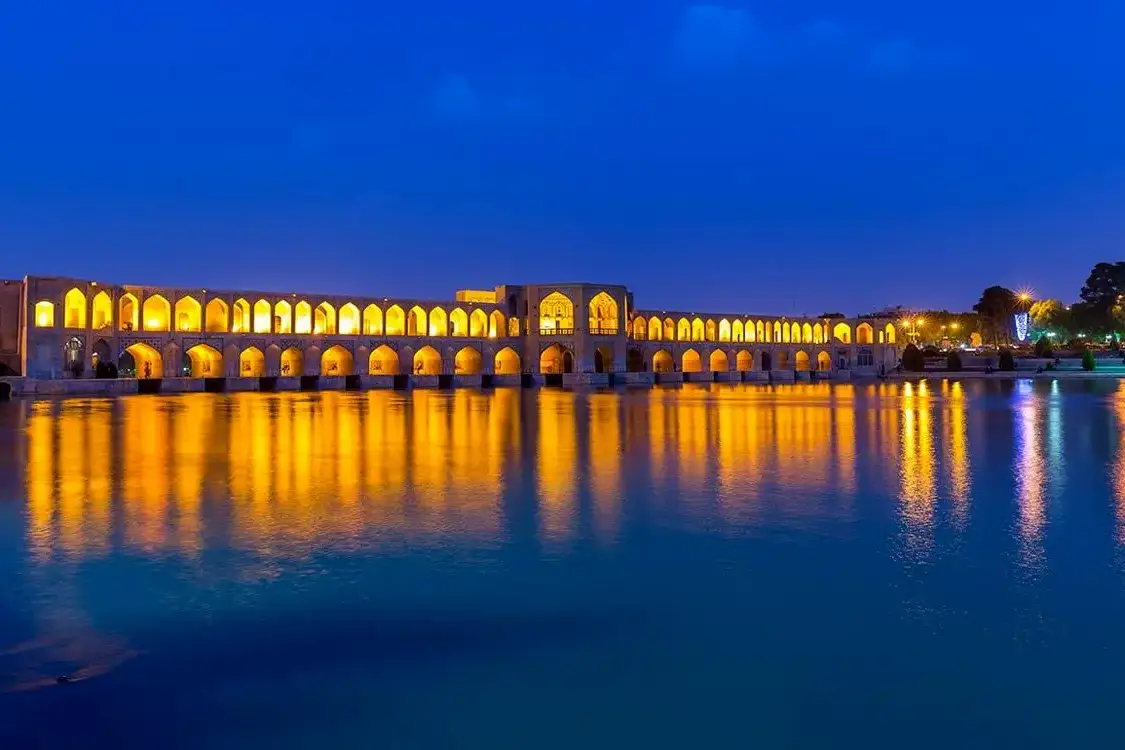
Si-o-se-pol
Si-o-se-pol, also known as the Allahverdi Khan Bridge, is a marvel of 17th-century engineering and design. Constructed under Shah Abbas I’s reign, it served not only as a bridge but also as a dam. Its 33 arches span the Zayanderud River, connecting Isfahan’s elite mansions and Armenian neighborhoods.
The bridge’s dimensions and architectural features, including its double-deck design, highlight the ingenuity of Safavid-era builders. Today, it shows Iran’s rich cultural heritage, attracting visitors with its panoramic views and historic significance.
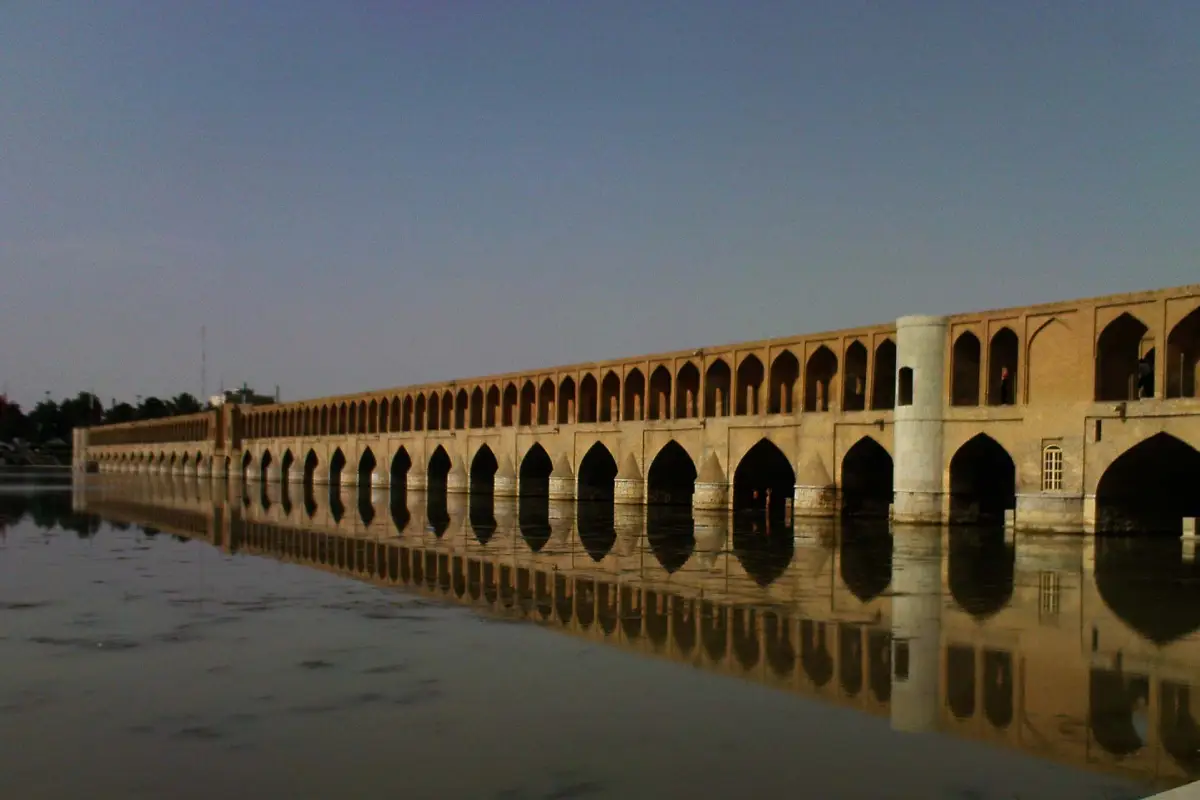
Imam Mosque
Imam Mosque, a crowning jewel of Isfahan, dominates Naqsh-e-Jahan Square with its exquisite architecture. Built between 1611 and 1630 under Shah Abbas I’s reign, it epitomizes Persian architectural mastery. Its grandeur, adorned with blue-tiled mosaics and intricate designs, captivates all who behold it.
The mosque’s acoustic marvels, including a unique stone with remarkable echoing properties, add to its allure. Despite its age, Imam Mosque showcases Safavid vision and craftsmanship, standing as a timeless monument to Isfahan’s rich heritage.
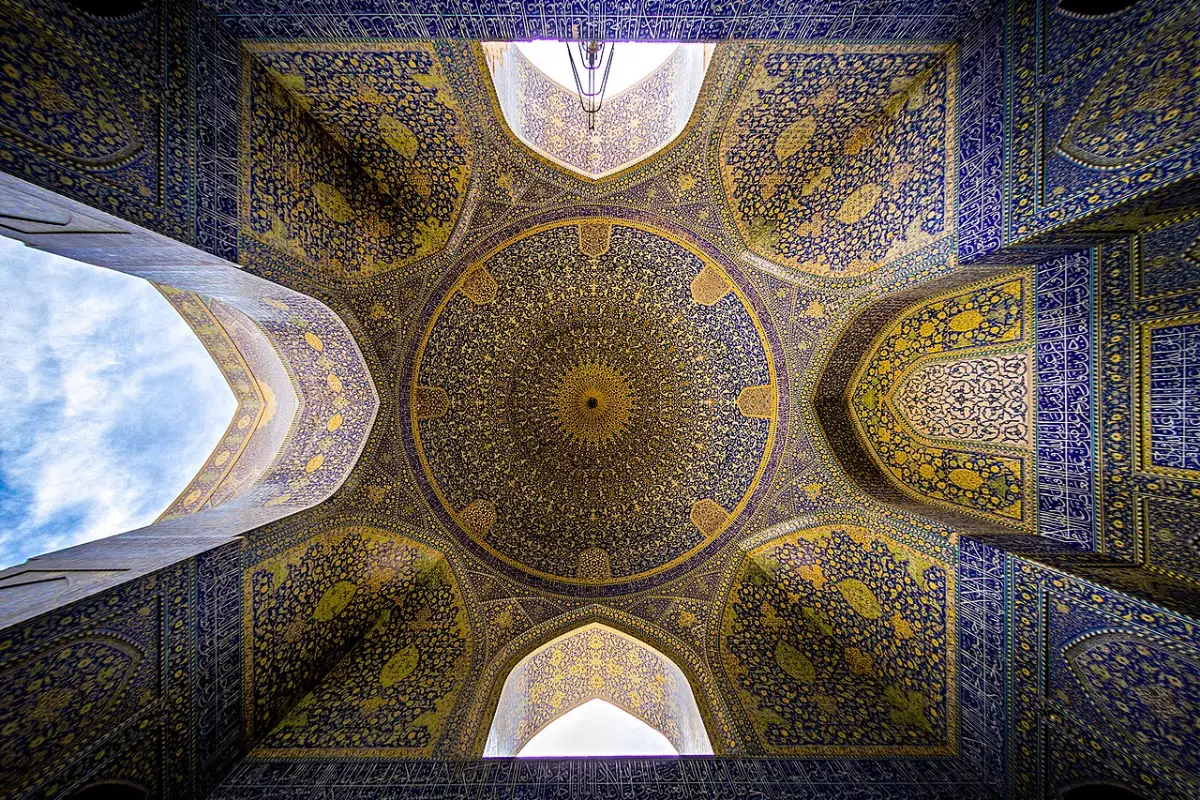
Isfahan Grand Bazaar
The Isfahan Grand Bazaar, also known as the Qeysarie Bazaar, represents Iran’s rich trading history. Dating back to the Safavid era, this bustling market was once among the grandest trading hubs in the region. Stretching from Naqsh-e Jahan Square to Kohneh Square, its labyrinthine alleys and arcades offer a glimpse into centuries of commercial activity.
Situated close to the Jameh Mosque, it reflects the traditional placement of bazaars near religious centers. Today, as you wander through its historic passageways, you’ll encounter a myriad of treasures, from Persian handicrafts to carpets and kilims. The architectural splendor and cultural significance of the Isfahan Grand Bazaar make it a must-visit destination for anyone exploring the city.
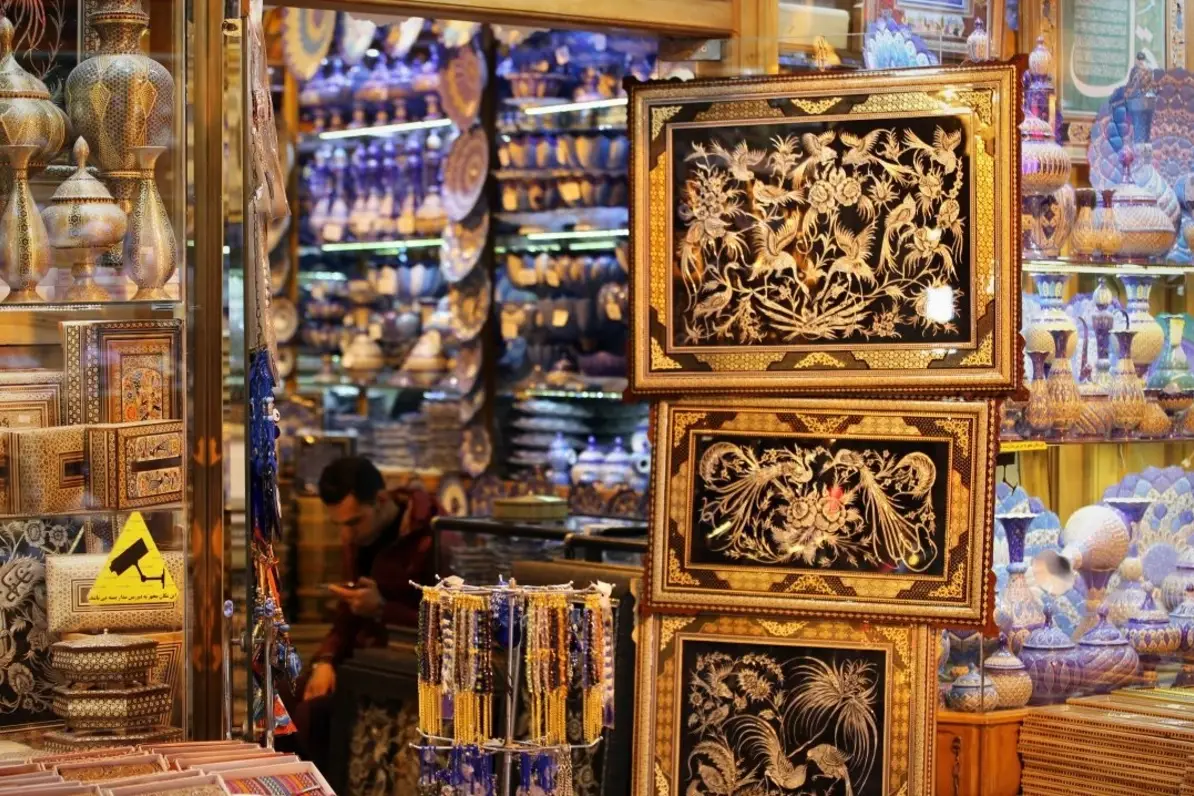
Hasht Behesht Palace
Located in Isfahan’s Charbagh Street, Hasht Behesht Palace offers a glimpse into Safavid-era opulence. Built by Shah Suleiman I, it served as a private pavilion and later as a modern school. The palace’s octagonal design and ornate decorations, including mural paintings and tilework, reflect the elegance of Persian architecture.
While only a portion of the palace remains today, its remnants still enchant visitors with their intricate designs and historical significance. A stroll through the palace grounds evokes a sense of regal splendor, inviting you to explore Iran’s rich cultural heritage.
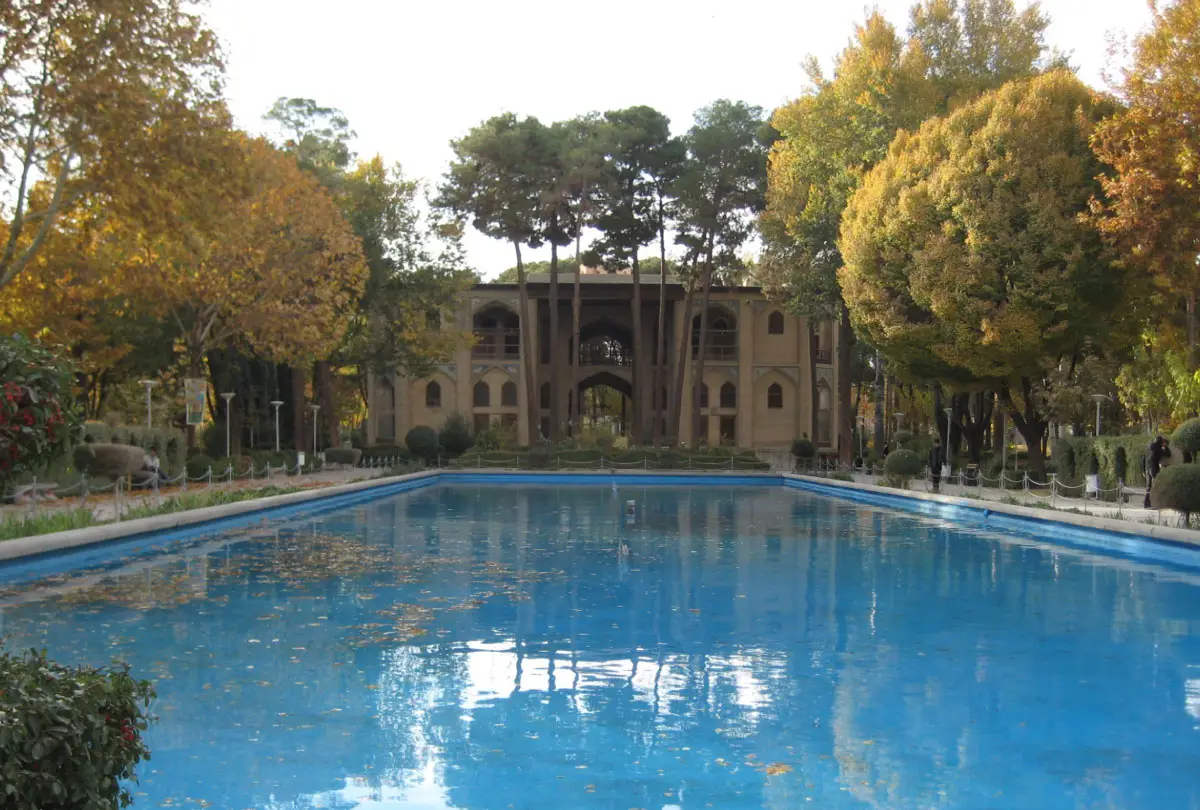
Jameh Mosque of Isfahan
The Jameh Mosque of Isfahan, a masterpiece of Islamic architecture, invites you to explore centuries of history and artistry. From its inception in the 8th century to its continual expansion and renovation, this mosque represents Iran’s rich cultural heritage. As you wander through its corridors, you’ll encounter remnants of different dynasties, each leaving its mark on its design and décor.
From the intricate tilework of the Saljuqi period to the elegant plasterwork of the Safavids, every corner reveals a story of craftsmanship and creativity. The mosque’s grandeur extends to its courtyards, adorned with remnants of past glory, including the Khajeh Nezam-ol-Molk Dome and the Omar platform. Whether you’re marveling at its architectural splendor or soaking in its spiritual ambiance, the Jameh Mosque offers a captivating journey through time.
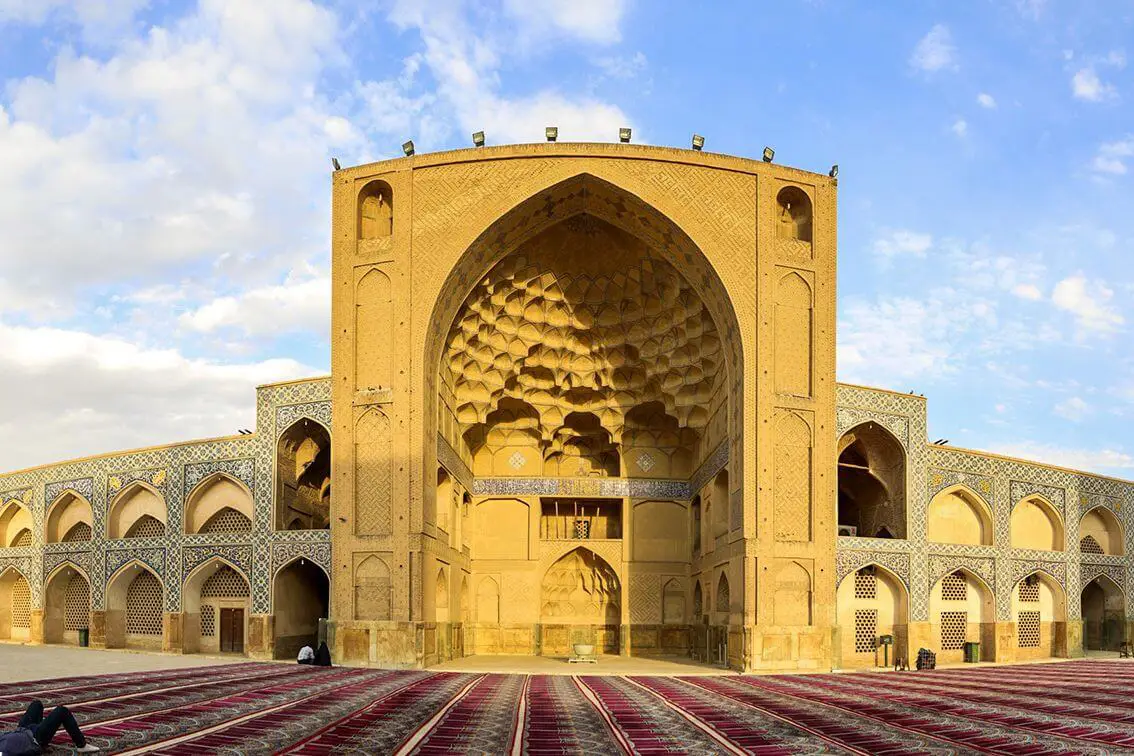
Menar Jonban
Located in the heart of Isfahan lies the grave of the Sufi ascetic Amu Abdullah Suqla; its history dates back to the Ilkhanate era. The most striking feature of this structure is its shaking minarets, a phenomenon that captivates visitors with its mystique. Though the minarets’ swaying motion is restricted, the allure of witnessing this unique spectacle remains.
Decorated with blue tiles and turquoise stones, the Menar Jonban reflects both Mongolian and Safavid architectural influences. As you explore its corridors and chambers, you’ll be transported to a realm where spirituality and craftsmanship converge, leaving you enchanted by its timeless beauty.
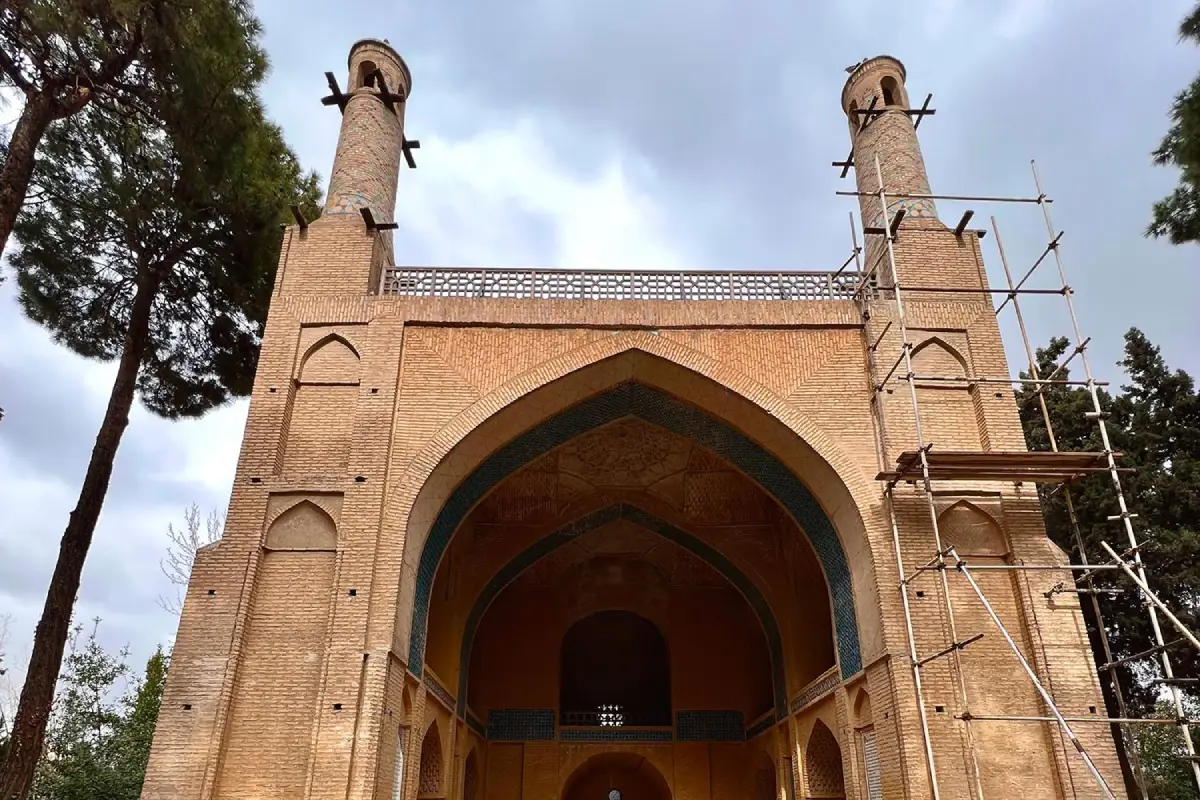
A Journey through History and Culture
Isfahan offers visitors a journey through centuries of history, art, and spirituality. From the majestic Jameh Mosque to the enigmatic Monar Jonban, each attraction invites you to immerse yourself in its rich stories and craftsmanship. As you wander through the city’s streets and landmarks, you’ll discover the vibrant Persian heritage, where past and present seamlessly intertwine.
Whether you’re captivated by the intricate tilework of ancient mosques or marveling at the shaking minarets of a medieval shrine, Isfahan’s attractions promise an unforgettable experience that will leave you spellbound and longing to return. So, pack your bags, start this enchanting journey with Visit Our Iran, and let Isfahan weave its magic on your soul.
Our experienced support team can help you plan the perfect itinerary, ensuring you make the most of your time in this enchanting destination. Contact our support team today to start planning your Isfahan tour and start an unforgettable experience.
